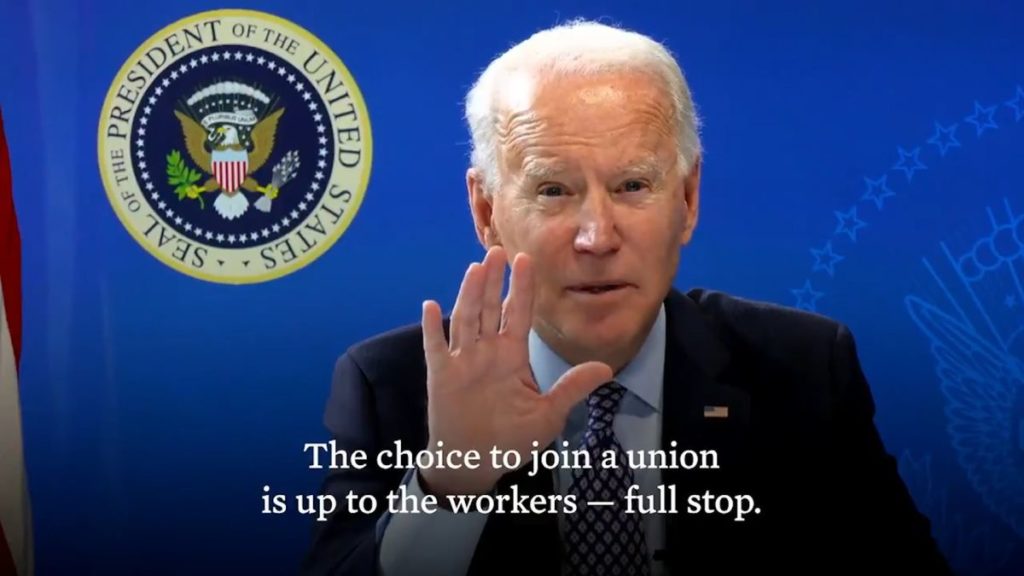Labor Day Lessons

Michael Kazin, long one of our most important historians of labor, the left, and the Democratic Party, has a Washington Post op-ed about remembering the relationship between the labor movement and the Democratic Party this Labor Day weekend.
As a fledgling union revival spreads across the country, Democrats would do well to recall the lesson of those events: They need unions to win. But unions also need Democrats, and now is the time for the party to step up to promote the kind of organizing that will benefit both sides in the future.Democrats today are voicing rhetorical support for organized labor as strongly as they have at any time in the party’s history. “We should encourage unions,” President Biden remarked in June. “I’m not just saying that to be pro-union. I’m saying it because I’m pro-American.” Biden also met with Christian Smalls, the young Black leader of a drive to sign up workers at Amazon. (Amazon founder Jeff Bezos owns The Post.)
But sympathetic rhetoric is not enough. The labor revival that Smalls and his fellow activists are stoking remains modest. It has found success mainly among wage earners at firms such as Starbucks and REI, who tend to be young college graduates. The labor upsurge has yet to reach those Whites and Hispanics who have spent little or no time in college — sizable groups that have been shifting toward the GOP. Where large numbers of less educated Hispanics do belong to unions, in cities such as Los Angeles and New York, most still vote solidly Democratic.
The now bright-red state of West Virginia offers an object lesson in union power. From the 1930s through the 1990s, White workers there faithfully elected Democrats. Driving the party’s long sway in the state was its bond with the United Mine Workers, which taught its members that Democrats stood for higher wages and protection of the right to organize, and that Democrats were helping fund the free union-run health-care system. Then mechanization and decline of the coal market sliced the UMW down to half its former size. West Virginia became one of the poorest states in the country. Without the union, working-class residents had nowhere they could complain about their lack of economic and medical security — at least in a way that benefited Democrats.
What can Biden’s party do to help make unions into a force that can boost its electoral fortunes while providing workers a degree of democracy as well as higher pay and better conditions? Buoyed by polls showing that more than two-thirds of Americans have a positive opinion of unions, Democrats should strongly promote the Protecting the Right to Organize Act, which would decisively weaken employers’ current advantage in the battle to unionize. The Pro Act would be a long-overdue revision of federal labor law, which has not been seriously amended in more than 70 years. And more Democrats should talk up organizing drives and walk on picket lines, as Sen. Bernie Sanders (I-Vt.) and other progressives have done. The Labor Department, to its credit, has a new website filled with advice for workers who want to form unions.
But Democrats’ ability to rebuild labor into a social juggernaut will be limited unless millions of workers make the effort to organize themselves. Franklin D. Roosevelt didn’t seriously back unions until the massive strike wave of 1934 made it imperative for him to do so. The nascent alliance helped Democrats dominate the midterms that fall. But not until the movement, in political scientist Daniel Schlozman’s term, “anchored” itself in the party did the heyday of modern liberalism really begin.
Simply put, you can’t have a substantial liberalism without working class support and that means making unions central to the party. This is what was forgotten by Jimmy Carter and Bill and Hillary Clinton and Barack Obama, among so many others. Biden, he gets this, because that’s who he is. Will Democrats get this going forward? Buttigieg? Kamala Harris? Don’t feel super confident here. But they have to if they want to rebuild a liberal majority.


